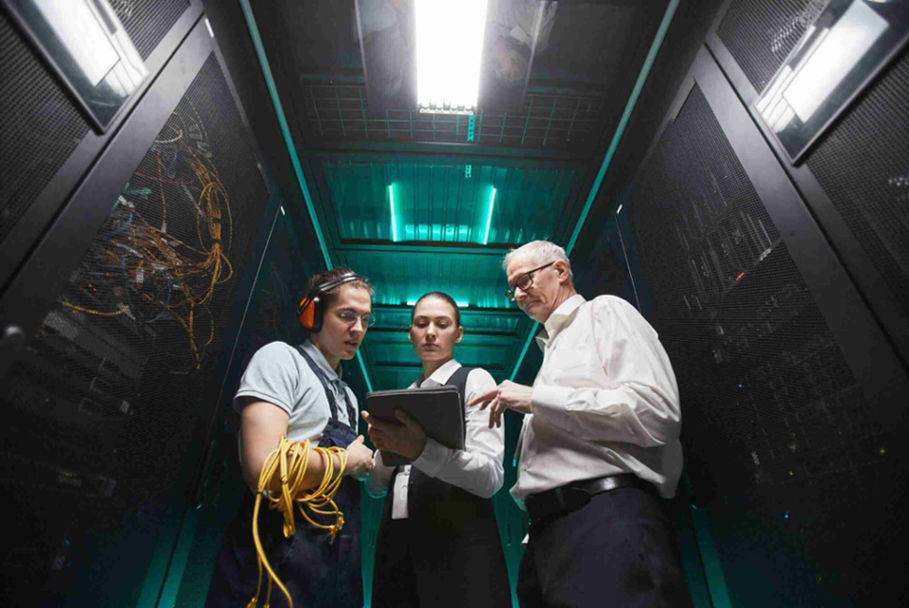In the digital age, businesses rely heavily on technology and the importance of a robust and secure IT infrastructure. To achieve this, many organizations are turning to Infrastructure and Network Audit Services. This article analyzes the significance of these services, their key components, and the benefits offered for enhancing the reliability and security of your dynamic environment.
Understanding Infrastructure and Network Audit Services
Infrastructure and Network Audit Services are a set of procedures and analyses conducted by experts to evaluate and optimize an organization’s IT infrastructure and network systems. The primary goal is to ensure that these vital components are both reliable and secure.

Key Components of Infrastructure and Network Audit Services
1. Comprehensive Network Map
This entails a meticulous examination of both hardware and software elements utilized in the network. Many people may claim to know what’s running on their network, but even in large enterprises, the true knowledge of the network components may only be known by a select few.
2. Security Review
This includes the outcomes of Distributed Denial of Service (DDoS) and penetration testing, uncovering potential weaknesses, single points of failure, fault tolerance, and more. The aim is to determine the size of a company’s attack surfaces, and where they are exposed.

3. Hardware Review
This provides an exhaustive list of the hardware, along with an assessment of items approaching End-of-Life (EOL) or Near-End-of-Life.
4. Recommendation and Action items
A pivotal contribution from the audit, offering insights based on findings. This encompasses network optimizations, recommended tools, security actions categorized from Level 1 (urgent) to Level 3, and guidance on replacing or extending the support period for devices. A company will be made aware of their single points of failure, and how to eliminate them. This will be combined with security review, where attack surfaces are brought to light, and recommendations on how to reduce their exposure.
5. Documentation of the Review
The deliverable of this audit is a physical document with all the audit’s findings and recommendations. This can be shared with the IT, security, finance and even compliance teams, to allow them to take actions where needed, as well as gain full visibility on the company’s backbone. This also allows for planning of future growth and preparing for fast IT pivots should the firm make strategic decisions that require the IT group to react.
6. Transition to Managed Services
With full discovery and recommendations presented, the company can look to transition to managed services of their network, where the action items can be implemented, and on-going support and changes can be managed.

The Benefits of Infrastructure and Network Audit Services
1. Enhanced Security: Identifying and addressing security vulnerabilities helps protect your organization from cyber threats and data breaches. No firm is immune to cyber threats; having a strong understanding of the size and location of your attack surfaces can help you mitigate that risk.
2. Optimized Performance: By pinpointing performance bottlenecks and inefficiencies, organizations can improve the efficiency of their IT systems, reducing downtime and improving productivity.

3. Cost Savings: Effective infrastructure management can lead to cost savings by eliminating unnecessary equipment and optimizing energy consumption.
4. Compliance and Legal Protection: Ensuring compliance with industry regulations and data protection laws safeguards your organization from potential legal issues.
5. Business Continuity: Auditors help develop strategies to ensure business continuity in the event of infrastructure failures, such as data backups, disaster recovery plans, and eliminating single points of failure.
Selecting the Right Provider
When choosing a provider for Infrastructure and Network Audit Services, consider the following:

1. Experience
Look for a provider with a proven track record in infrastructure and network audits.
2. Expertise
Ensure the auditors have expertise in the technology systems that exist in your network, and can address your specific needs.
3. Customization
The services should be tailored to your organization’s unique infrastructure and goals.
4. Reputation
Check for testimonials and reviews to gauge the provider’s reputation.
Investing in Infrastructure and Network Audit Services is a proactive approach to ensuring the reliability and security of your IT infrastructure. By identifying and addressing vulnerabilities, optimizing performance, and planning for future needs, these services are a critical component of successful IT management. Whether you’re safeguarding your organization’s sensitive data, enhancing productivity, or preparing for growth, Infrastructure and Network Audit Services play a pivotal role in your technology strategy.




